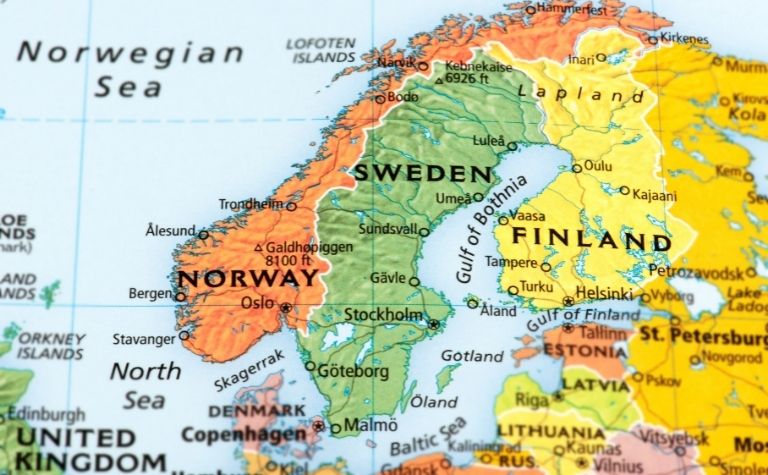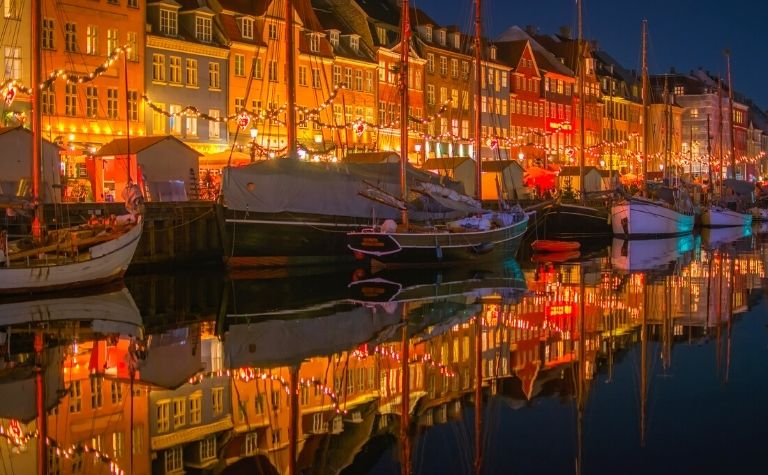The Scandinavian countries are consistently ranked among the wealthiest, happiest, and best-governed nations in the world today. [1]
However, explanations for their exceptional success can be more complex than they appear at first glance. And it is not always easy to separate cause from effect to extract actionable insights.
Scandinavians are rich because their small, open economies produce high-value goods for the rest of the world.
At the same time, Scandinavian governance models are characterized by wage bargaining mechanisms, robust spending on social infrastructure, and low levels of corruption.
The rest of this article will look at the degree and origins of Nordic wealth, consider why many explanations for the Scandinavian miracle are overly simplistic, and point out notable flaws in the model.
Also, see Why Do Scandinavians Have Thin Hair? to learn more.

Wealth, Happiness, and Nordic Exceptionalism
The Scandinavian and Nordic nations – Sweden, Denmark, Norway, Finland, and Iceland – are among the richest countries in the world today.
They consistently rank alongside global powers such as the U.S., tiny trading hubs like Singapore, and oil-rich gulf states like Qatar in the top 20 nations ranked by per capita GDP. [2]
But it is not just their incredible wealth that sets the Scandinavian nations apart from many other countries and makes them a remarkable example of successful governance for the world.
What truly sets them apart is how they continue to foster high levels of self-reported happiness and trust in governing institutions in an era of near-universal global political unrest.
Since the World Happiness Report was first published in 2013, these five nations have consistently scored among the top 10 spots in its findings, often taking all three top positions.
Inevitably, experts everywhere have been looking to the Nordic model for actionable insights that can help other societies make their own positive transformations.
However, drawing insights from the Scandinavian model that can be readily replicated elsewhere is easier said than done.
Each country in the world has its own unique characteristics, informed by long histories and specific demographic, geographic, economic, and cultural limitations.
So, not all solutions that work in Scandinavia apply universally.
Moreover, even within the Scandinavian situation, it is hard to separate cause from effect and decide which factors historically determine Scandinavian success.
Finally, the model is not without its flaws. Succeeding sections will look into these thorny issues in greater detail.
Also, see How Are Scandinavians Viewed In Europe? to learn more.

The Origins of the Scandinavian Success Story
Like many developed nations, the Scandinavian countries started on their development path with the most extractive natural resources industries before developing advanced industrial infrastructures.
Today, they primarily export high-value goods and services, although Norway (oil) and Denmark (agriculture) continue to rely on natural resources for a significant part of their nation’s wealth. [3]
However, this trajectory by itself doesn’t explain why they also have lower levels of inequality, higher levels of trust, and the best global results in terms of self-reported happiness.
The governments and bureaucracies of many wealthy countries – such as the US or UK, for instance – do not enjoy such high levels of institutional trust among their citizens.
On the other hand, many poorer nations that attempt the same trajectories – such as Brazil and South Africa – haven’t been able to get beyond what economists call the “middle-income trap” and get rich.
Many on the economic left attribute the successes of the Scandinavian governance model to robust state welfare – which provides adequate for citizens’ health and education needs – and wage bargaining mechanisms – that have led to relatively low wage inequality by contemporary standards.
However, politicians from poorer countries can legitimately point out that they may not have the same resources at their disposal to spend on their populations and that wage bargaining would make their nascent industries uncompetitive in global markets.
On the other hand, conservative thinkers seeking to limit immigration suggest that it is easier to provide such generous state support for smaller, more homogenous populations where trust is easier to build.
This claim can be disputed on two grounds. Firstly, the Scandinavian nations are not entirely homogeneous (19% of Swedes were born outside that country, for instance).
And secondly, some recent studies suggest that it is not ethnic diversity as much as ethnic segregation that erodes trust in institutions.
More interesting, in this context, is speculation that the absence of a historical underclass of enslaved people of a different ethnicity or feudal serfs may have fostered greater cohesiveness and trust in Scandinavian populations well before they embarked on the path of economic development.
Perhaps, these historical conditions have meant that, instead of getting ensnared within vicious cycles of low trust and high inequality like much of the world, Scandinavians have been fortunate to ride virtuous circuits into higher levels of trust and lower levels of inequality.
Also, see What Do Scandinavians Think of the Netherlands? to learn more.

Flaws in the Nordic Model
For all its justly-applauded merits, the Nordic model also has some notable shortcomings. The most glaring of these is its outsized carbon footprint.
Ranked by carbon emissions per capita, many Nordic nations rank quite highly. [4]
With the oil and gas industry contributing significantly to making it one of the wealthiest countries in the world, Norway tops the list of Nordic carbon emitters.
But countries like Denmark, Sweden, and Finland are equally guilty of environmentally-destructive agriculture, fishing, and forestry practices.
In the long term, this model is unsustainable. It would require several planets with resources like Earth’s to provide for the existing human population if everyone on the planet consumed as much as Nordic citizens do.
More pressingly, the model contains many of the most significant flaws of the current growth-driven neo-liberal models of world governance.
For instance, it is as debt-driven as the global model. The problem is only worsening as populations age, with fewer productive working age-citizens supporting more dependants. [5]
Eventually, the Scandinavians may have to open up to ever greater degrees of immigration to support the model financially or curtail spending on their citizens like many poorer nations are frequently required to do by international lenders.
Finally, in their search for high-value goods to export, Scandinavian nations often open themselves up to ethical compromises overseas that they would never consider in dealing with their own citizens.
Sweden, for instance, is the third-largest exporter of arms in the world per capita and has supplied weapons to authoritarian regimes in Saudi Arabia and Libya, among others. [6]
Conclusion
Scandinavians are rich because they have highly competitive private sector industries and enjoy generous state protection and support for citizens.
Also, see Are Finns Slavic or Scandinavian? to learn more.
References:
[1] Source
[2] Source
[3] Source
[4] Source
[5] Source
[6] Source
